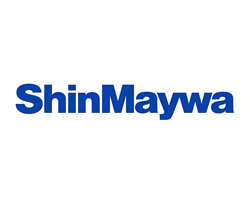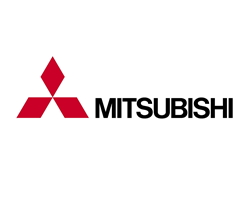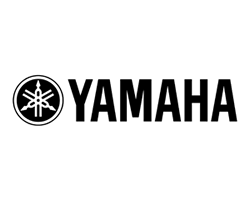Japanese Robots
Brief Overview of Robots in Japan

About Half of the Robots in the World are Made in Japan
The global market for industrial robots in 2011 was 8.497 billion dollars, of which Japanese enterprises accounted for a share of 50.2%. The global market in a broad sense including electronic packaging robots was about 13.369 billion dollars, of which Japanese enterprises accounted for a share of 57.3%.
The 2nd Biggest Robot Market in the World
Not only the production and creation of robots, but also the market of robots is also really big in Japan. As of 2015, Japan is the 2nd Biggest market for the sales of robots in the World because of having many advanced factories producing automobiles and electronics. Besides, the Robotics industry is more important in Japan than any other country in the world. Japan employs over a quarter of a million industrial robot workers. In the next 15 years, Japan estimates that number to jump to over one million and they expect revenue for robotics to be near $70 billion by 2025.
Japanese Robot Culture Has Influenced on Robot Industry
The reasons why Japan became the most advanced robot nation, are because of not only a high-level technology, but also a influence of the Japanese robot culture. Japan has many comics, novels and animation about robots since 1950s. The first famous robot anime/comic is "Astro Boy" in 1951. Since then, there have been many robot-themed productions originated in Japan, such as "MazingerZ", "Gundam", "Robotech", "Evangelion", "Transformers" and so on.

Documentary of Japan's Robotic Technology (27:12)
Humanoid Robots of Japan
ASIMO by HONDA

The World Leading Humanoid Robot
ASIMO is a humanoid robot designed and developed by Honda. As of 2015, ASIMO is the most advanced humanoid robot in the world. Introduced on year 2000, ASIMO was designed to be a multi-functional mobile assistant. With aspirations of helping those who lack full mobility, ASIMO is frequently used in demonstrations across the world to encourage the study of science and mathematics. At 130 cm tall and 48 kg, ASIMO was designed to operate in real-world environments, with the ability to walk or run on two feet at speeds of up to 6 kilometres per hour. ASIMO is now part of the Innoventions attraction at Disneyland and has been featured in a 15-minute show since year 2005.
QRIO by SONY

The First Humanoid Robot Capable of Running
QRIO was a bipedal humanoid entertainment robot developed and marketed (but never sold) by SONY. QRIO stood approximately 0.6 m tall and weighed 7.3 kg. QRIO is capable of voice and face recognition, making it able to remember people as well as their likes and dislikes. A video on QRIO's website shows it speaking with several children. QRIO can run at 23 cm/s, and is credited in Guinness World Records as being the first bipedal humanoid robot capable of running (which it defines as moving while both legs are off the ground at the same time). The 4th generation QRIO's internal battery lasts about 1 hour.On January 26, 2006, Sony announced that it would stop development of QRIO.
Partner Robots by TOYOTA

The First Humanoid Robots Playing Instruments
The Toyota Partner Robots are a series of humanoid robots developed by Toyota. They debuted playing music on drums, trumpets and violins at the 2005 World EXPO in Aichi, Japan. There are 5 robots in all, most of which have different movement systems. The 5 robots are: Version 1 (bipedal robot), Version 2 (Segway-like wheels), Version 3 (Segway-like wheels), Version 4 (unique wire system) . In July 2009, Toyota released a video of the running and standing skills of their partner robot, and it reaches the speed of 7 km/hour.
KIROBO(ROBI) by Robo Garage

The First Humanoid Robot Astronaut
Kirobo is the first humanoid robot astronaut, developed by a collaborative effort between Dentsu, the University of Tokyo, Robo Garage, Toyota, and JAXA (Japan Aerospace Exploration Agency), to accompany Koichi Wakata, the first Japanese commander of the International Space Station(ISS). Kirobo arrived on the ISS on August 10, 2013 on JAXA's H-II Transfer Vehicle Kounotori 4, an unmanned resupply spacecraft launched August 4, 2013 from Japan's Tanegashima Space Center. The robot's capabilities include voice and speech recognition, natural language processing, speech synthesis and telecommunications, as well as facial recognition and video recording. Kirobo is specially designed to navigate zero-gravity environments and will assist Commander Wakata in various experiments.
HRP-3 by Kawada Industry

Humanoid Robot Made for Human Workplace
HRP-3 is the final robotic platform for the Humanoid Robotics Project sponsored by Japan Ministry of Economy, Trade and Industry (METI) through New Energy and Industrial Technology Development Organization (NEDO). An interesting feature that HRP-3 has is the ability to stand up again after lying flat on the floor either on its back or front. Something that Honda's ASIMO is not able to do. With the successful incorporation of the many functions, it was successfully demonstrated that HRP-3 could be operated at adverse and harsh environments, such as construction sites. As next objectives, with the experience gained from the development of HRP-3, Kawada plans to further stabilize and lower the costs associated with the robot hardware. Moreover, Kawada strives to develop robots that are capable of effectively function within normal human environments to assist daily human activities.
HRP-4C(Miim) by AIST

Most Human Like Humanoid Robot
The HRP-4C, nicknamed Miim, is a feminine-looking humanoid robot created by the National Institute of Advanced Industrial Science and Technology (AIST), a Japanese research facility. Miim measures 158cm tall and weighs 43kg including a battery pack. She has a realistic head and face, and the figure of an average young Japanese female (based on the 1997–1998 Japanese body dimension database). She can move like a human, utilizing 30 body motors and another eight dedicated to facial expressions. Miim can also respond to speech using speech recognition software, and is capable of recognizing ambient sounds. Miim can also sing, using the vocal synthesizer Vocaloid.
Actroid by Osaka University

Most Realistic Female Humanoid Robot
Actroid is a type of humanoid robot with strong visual human-likeness developed by Osaka University and manufactured by Kokoro Company Ltd. It was first unveiled at the 2003 International Robot Exhibition in Tokyo, Japan. Several different versions of the product have been produced since then. In most cases, the robot's appearance has been modeled after an average young woman of Japanese descent. The Actroid woman is a pioneer example of a real machine similar to imagined machines called by the science fiction terms android or gynoid, so far used only for fictional robots. It can mimic such lifelike functions as blinking, speaking, and breathing. The "Repliee" models are interactive robots with the ability to recognize and process speech and respond in kind with Artificial Intelligence.
Other Advance Robots of Japan
i-foot by TOYOTA

Mountable, Walking "i-foot" Robot
"i-foot" is a mountable, walking robot. This 2-legged, mountable robot was developed for three-dimensional mobility, with the ability to navigate staircases. The passenger climbs on and drives with a joystick. The egg-shaped design of the "i-foot" that wraps around the passenger is meant to express the dream of future three-dimensional mobility and the feelings of safety and reliability. The ability to mount and dismount comfortably was of primary consideration in the design of the bird-like legs, which bend toward the rear. Steering and speed of the “i-foot” is controlled with a joystick, a fun form of driving different from that of conventional forms of mobility.
i-real by TOYOTA

World Changing Personal Mobility Robot
The i-real is a 'Personal Mobility Concept' made by automotive giant Toyota. The i-real is a 3-wheeled electrically powered one-passenger vehicle, running on lithium-ion batteries. In Low-Speed Mode, the vehicle is upright, and moves around at 'walking pace' at similar eyesight height to pedestrians, without taking up a large amount of space. In High-Speed Mode, the Toyota extends in length by leaning back and extending the single rear wheel to improve aerodynamics and stability, thus being able to achieve a speed of 30 km/h. It leans into corners, like other tall, one-man vehicles such as the Segway, to prevent it from tipping over. Perimeter-monitoring sensors detect when a collision with a person or object is imminent and alerts the driver by emitting a noise and vibrating. At the same time, it alerts people around it of its movements through use of light and sound.
KURATAS by Suidobashi Heavy Industry

The World's First Giant Boarding Robot
Kuratas is a rideable and user-operated robot built by the Japanese company Suidobashi Heavy Industry. Billed as "the world's first giant boarding robot". The robot weighs approximately 4,500 kg, and is approximately 4 meters high. It can be crewed by one person; that operator would sit in the "body" of the robot in a seat, with the control device in front of them. The Kuratas can also be controlled externally by remote control. Kuratas sports a four wheeled, thirty joint exoskeleton, which is controlled by the pilot or can be controlled remotely. The remote operator uses a 3g touch screen phone as the primary interface.[2] The on-board pilot's user interface (UI) is a Kinect based device. The robot can be "armed" with multiple weapons, and a powered humanoid hand called the "iron crow" that is capable of picking up objects, and is linked to the pilot by "what appears to be a Mattel Power Glove". The company lists two other "weapons", a "Kuratas Handgun", and a "Pilebunker". Currently, the Kuratas is able to drive on its four wheels at around 10 km/h.
Murata-Boy by Murata Manufacturing

The First Self-balancing Bicycle Robot
Murata Boy is self-balancing robot developed by Murata Manufacturing, a Japanese electronic components company. Murata Boy is a bicycle-riding robot which, standing 50 cm tall and weighing 5 kg, can travel at a speed up to 2 km per hour. It can balance on the bike moving forwards, backwards, and when remaining still (without planting his feet on the ground). Murata Boy was listed on TIME magazine's list of Best Inventions of 2006.
Murata-Girl by Murata Manufacturing

The First Self-balancing Unicycle Robot
Murata Girl is self-balancing robot developed by Murata Manufacturing, a Japanese electronic components company. Murata Girl is a unicycle-riding robot released in 2008, standing 50 cm tall and weighing 6 kg that can travel at a speed of 5 cm per second and can ride along a balance beam. It can maintain perfect balance on its unicycle as it moves around. Murata Girl has a built-in ultrasonic sensor that allows it to keep its distance from objects.
Murata Cheerleaders by Murata Manufacturing

The First Self-balancing Ball-mount Robot
Instead of running on wheels, the Cheerleader robot balances on a detached ball using three gyro sensors for balance along with the inverted-pendulum control technology with the robot’s light-up pom poms acting as active balancing weights. The squad of ten ball-mounted robots uses advanced ultrasonics, infrared, and group control technology to perform synchronized dance routines with perfect stability. The robots carry out synchronized dance routines using real-time position measurement consisting of ultrasonic microphones, which measure positions and distances by means of ultrasonic pulses, and four infrared sensors that monitor location using flashes of IR light. All of this is coordinated by a central control system using a wireless communication network.
HAL by CYBERDYNE

World's First Powered Exoskeleton in a Market
The Hybrid Assistive Limb (also known as HAL) is a powered exoskeleton suit developed by Japan's Tsukuba University and the robotics company CYBERDYNE. It has been designed to support and expand the physical capabilities of its users, particularly people with physical disabilities. There are two primary versions of the system: HAL 3, which only provides leg function, and HAL 5, which is a full-body exoskeleton for the arms, legs, and torso. By October 2012, HAL suits were in use by 130 different medical institutions across Japan. In February 2013, the HAL system became the first powered exoskeleton to receive global safety certification. In August 2013, HAL received EC certification for clinical use in Europe as the world's first non-surgical medical treatment robot. In addition to its medical applications, the HAL exoskeleton has been used in construction and disaster response work.
Industrial Robot in Japan
The Most Advanced Industrial Robots are Produced in Japan
Japan is the leading nation of industrial robot. Japan produce the most number and most advanced industrial robots in the world. The following companies are the representatives of Japanese industrial robots companies.
YASKAWA

FANUC

NACHI

Nabtesco

ShinMaywa

IHI

Kawasaki

DENSO

MITSUBISHI

YAMAHA









